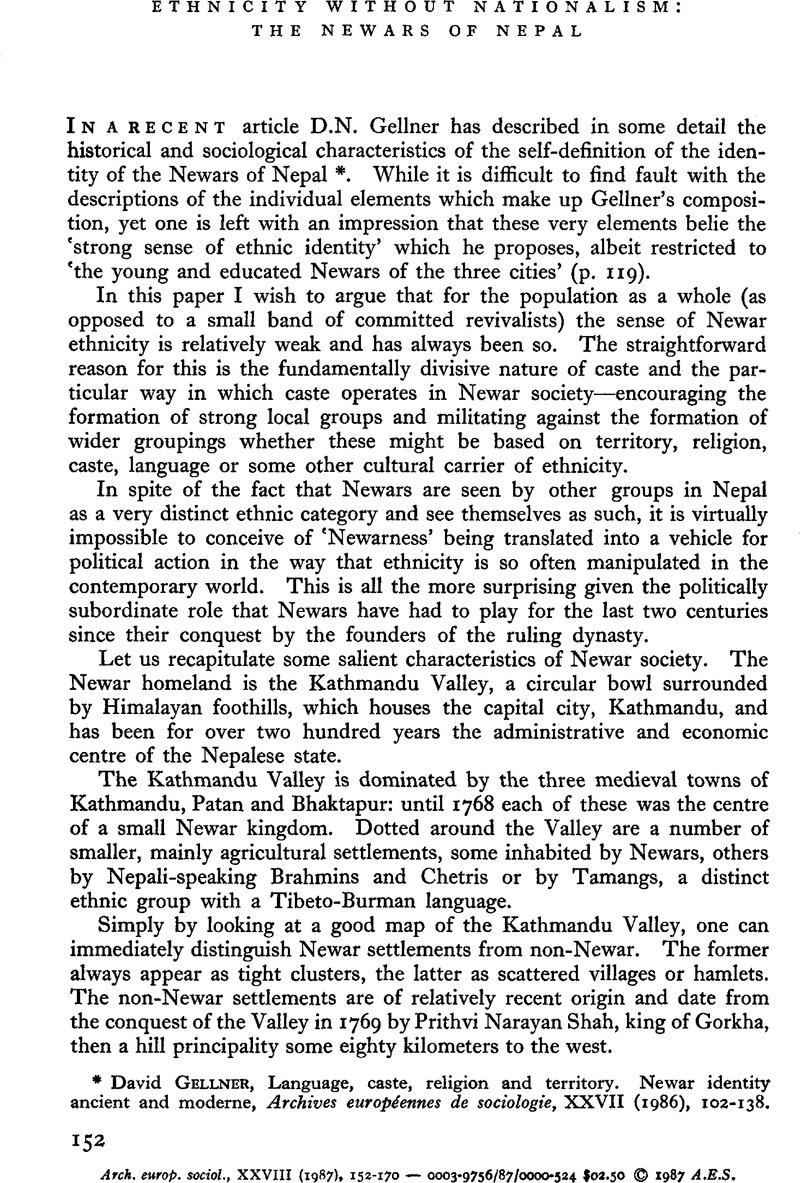Crossref Citations
This article has been cited by the following publications. This list is generated based on data provided by Crossref.
Pigg, Stacy Leigh
1992.
Inventing Social Categories Through Place: Social Representations and Development in Nepal.
Comparative Studies in Society and History,
Vol. 34,
Issue. 3,
p.
491.
Leve, Lauren G.
2002.
Subjects, Selves, and the Politics of Personhood in Theravada Buddhism in Nepal.
The Journal of Asian Studies,
Vol. 61,
Issue. 3,
p.
833.
Wilmore, Michael J.
2006.
Gatekeepers of cultural memory: Televising religious rituals in Tansen, Nepal.
Ethnos,
Vol. 71,
Issue. 3,
p.
317.
Wilmore, Michael
2008.
Urban Space and the Mediation of Political Action in Nepal: Local Television, Ritual Processions and Political Violence as Technologies of Enchantment.
The Australian Journal of Anthropology,
Vol. 19,
Issue. 1,
p.
41.
Bhandari, Kalyan
2016.
Understanding Nepali Nationalism.
Studies in Ethnicity and Nationalism,
Vol. 16,
Issue. 3,
p.
416.
Ellingsen, Winfried
2017.
The Khachchara of Kathmandu – mobility, situatedness and ethnic identification.
Journal of Ethnic and Migration Studies,
Vol. 43,
Issue. 3,
p.
513.
2020.
Unseeing Empire.
p.
215.
2020.
Unseeing Empire.
p.
33.
2020.
Unseeing Empire.
p.
119.
2020.
Unseeing Empire.
p.
159.
2020.
Unseeing Empire.
p.
245.
2020.
Unseeing Empire.
p.
205.
2020.
Unseeing Empire.
p.
70.
2020.
Unseeing Empire.
p.
1.
Mukhia, Anmol
2024.
Identity and elites in developmental politics: a case study of the “Gorkha” and “Gorkhaland” movements in the eastern parts of India.
Politics, Groups, and Identities,
Vol. 12,
Issue. 3,
p.
599.



